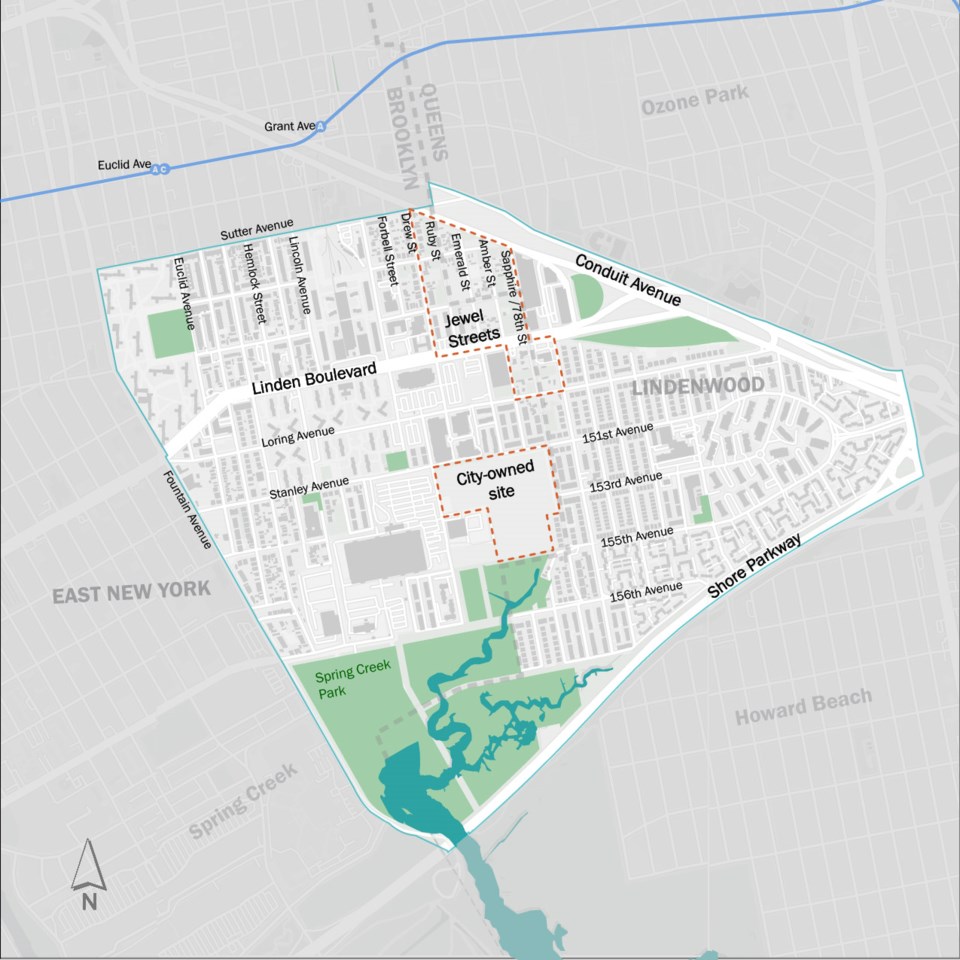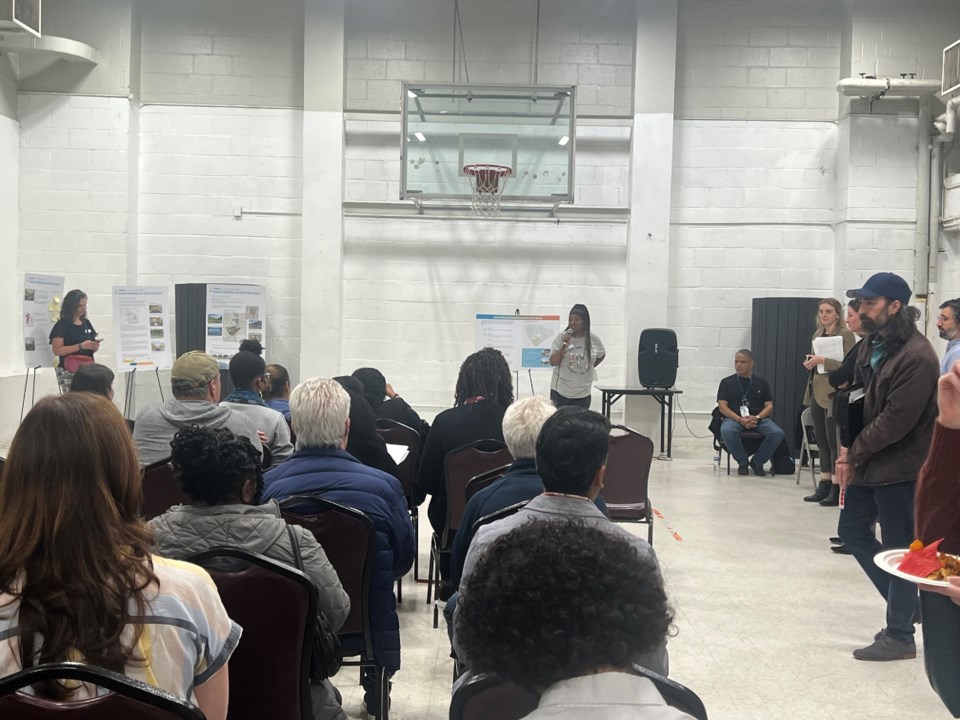East New York residents pleaded with city officials to fix the sewage problem in an area known as Jewel Streets, known to regularly flood even after light rain, before it builds any more housing.
As city officials asked the community for their input during the sixth community engagement workshop on Oct. 30, residents were focused on sewage fixes.
“I am asking and pleading with you – don’t build anything up and down Linden Boulevard until you rectify the homeowners of the Jewel Streets who have been neglected and living on septic tanks for over 50 years,” said Debra Ack, the special projects coordinator for East New York Community Land Trust, as she addressed the crowd at the Pink Houses.
At the meeting, city agencies, including New York City Department of Environmental Protection (DEP) and the city Housing and Preservation & Development (HPD), asked residents to place post-it notes marked with feedback on the city’s strategic plan for the area, which includes not only flood improvements, but also affordable housing, access to green space and increased pedestrian safety.
While there is a broader plan to revitalize the area with new amenities, many residents' central concern remains flooding, sewage problems and limited access to city services has been a mainstay for decades.
The Jewel Streets refer to the north-south streets named after various jewels: Ruby, Emerald, Amber and Sapphire Streets. The 12-block neighborhood straddles East New York, Brooklyn and Lindenwood, Queens and is known to residents as “The Hole” due to its sunken streets. The low-lying area’s high water table and lack of comprehensive stormwater and sanitary sewer infrastructure contribute to year-round flooding, even on sunny days, according to the HPD.

Joyce Scott-Brayboy, an East New York resident of 30 years, said she’s not convinced the city’s priority remains with the sewage issues that plagues her neighborhood.
“I’m not confident because they [the city] lie, they tell you one thing and they do something else,” said Brayboy, who is skeptical because of the construction of a new building nearby that she says was planned as affordable housing, but is now a homeless shelter. “They say one thing and the next thing you know you have shelter.”

Officials tried to allay those fears, noting the commitment is there in dollar terms.
“The agency has committed over $100 million in our agency’s capital plan, with a timeline so that we can build the infrastructure,” said Wendy Sperduto, Assistant DEP Commissioner. “So this is different from previous years where there were no committed dollars.”
Over the last two years, DEP has installed catch basins below Loring and Dumont Avenues, and plan to install additional basins on Blake Avenue.
Ana Fischer, 65, told BK Reader that as a community liaison under former City Council Member Charles Barron, she spearheaded an initiative to get the city to focus on infrastructure issues.
“We wanted to keep them to task, and hold them accountable for everything they said,” said Fischer, as work was also done to remove illegally dumped trash and install cameras along streets in 2022 and 2023.
Fischer said although much of this accountability paved the way for the work and engagement being done now, there’s still work to be done for the “south side” of the Jewel Streets area, or south of Linden Boulevard.
“Quite frankly I didn't want to see anything else, that was irrelevant to me,” said Fischer, referring to the housing and street safety plans displayed at the meeting. “Tell me what the infrastructure looks like for the south side and what you’re working on. At the end of the day, when they finish the work, they're going to a nice dry house, and they’re not thinking about East New York where flooding is taking place.”
The city is also currently evaluating a variety of options to provide adequate sewage systems to the area, from constructing new storm sewers to finding natural ways for storm water to re-enter the ground, such as bluebelts. Also being explored is a buyout program to purchase privately-owned land in the area, which entails letting it return to a natural landscape, according to the Office of Neighborhood Strategies, a division of HPD.



